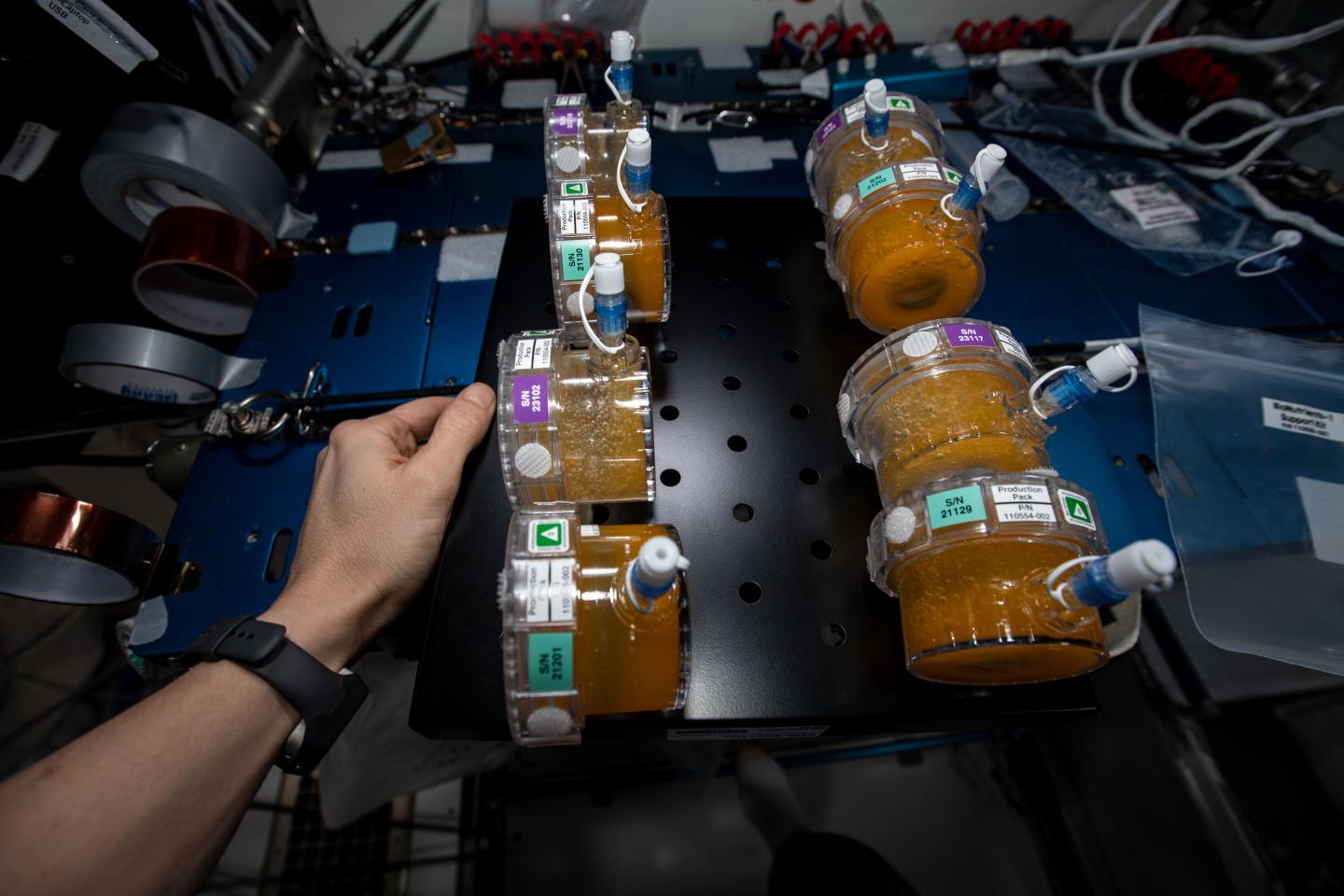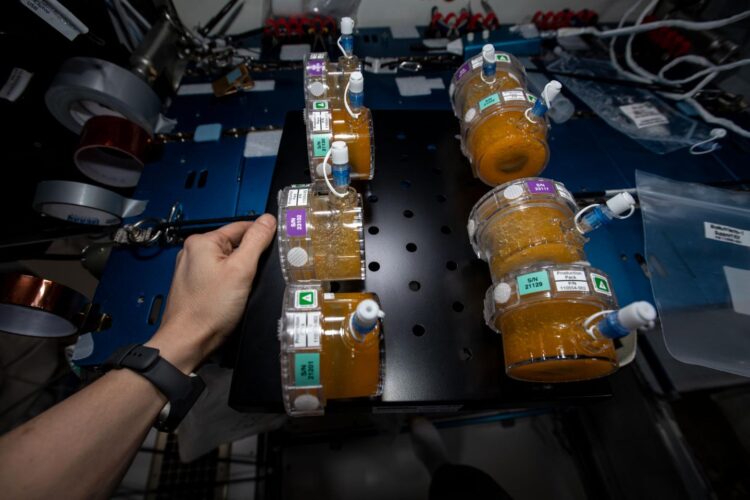On April 7, Dragon is scheduled to undock from station, bringing samples, hardware and data from completed investigations back to Earth on its return trip

Credit: NASA
On March 9, 2020, a Dragon cargo spacecraft arrived at the International Space Station carrying dozens of scientific experiments as a part of SpaceX’s 20th cargo resupply mission. Now, Dragon heads home. On April 7, it is scheduled to undock from station, bringing samples, hardware and data from completed investigations back to Earth on its return trip.
Here are details on some of the investigations returning to the ground for further analysis and reporting of results.
Generating a nutritional meal
Planning ways to supply food for a multi-year mission on the Moon or Mars while keeping astronauts healthy on the long trip may require making fresh food and nutrients in space. BioNutrients demonstrates a technology that enables on-demand production of nutrients needed for during long-duration space missions.
The process uses microbes, such as baker’s yeast, expressly engineered to make fresh nutrients for human consumption starting from dry powdered media — food for the yeast — and water. The fresh nutrients can supplement potential vitamin losses from food that is stored for very long periods. Over the five-year period of the demonstration, astronauts intermittently activate specially designed packets containing the yeast — or other microorganisms, in the future — and their food. They warm the packets for two days to allow the yeast to do its job, growing and producing the desired nutrients, and then freeze them for return to Earth for analysis. These tests will allow scientists to check how long their specially engineered yeast can be stored on the shelf and still be able to churn out fresh nutrients that humans need to stay healthy in space. Some samples will be returning on this SpaceX Dragon capsule. Although designed for space, this system also could help provide nutrition for people in remote areas of our planet.
Toward printing human organs in space
Biological printing of the tiny, complex structures found inside human organs, such as capillaries, has proven difficult in Earth’s gravity. Under Earth’s gravity, an initial scaffolding, or support structure, is necessary to form the desired shape of the tissue. The BioFabrication Facility (BFF) attempts to take the first steps toward printing human organs and tissues in microgravity using ultra-fine layers of bioink that may be several times smaller than the width of a human hair. This research is part of a long-term plan to manufacture entire human organs in space using refined biological 3D printing techniques.
Launched to station in July 2019 on the 18th SpaceX cargo resupply flight, the facility now comes back to Earth. According to Techshot President and CEO John Vellinger, the facility has proven basic functionality. The team is bringing the facility back to Earth to make upgrades that will enable high throughput use when it returns to the space station.
Helping the heart
The Engineered Heart Tissues study looks at how human heart tissue functions in space. It uses unique 3D tissues made from heart cells derived from human induced Pluripotent Stem Cells (hiPSCs), essentially adult stem cells. The engineered heart tissues, or EHTs, are complex 3D structures, each about the size of a few grains of rice. These structures are more similar to tissues in the body than flat cell cultures in a petri dish or those floating in a flask of liquid.
Researchers expect significant differences in function, structure and gene expression between EHTs in microgravity and those on the ground. Understanding these differences could help them find ways to prevent or mitigate problematic changes on future long-duration missions. The hardware developed for the experiment also has created advanced, more efficient and more cost-effective technology for use on Earth. Researchers are bringing some EHTs back to Earth to see whether they recover from changes thought to occur in microgravity.
Biofilm festival
Samples from the Space Biofilms investigation, which examines microbial species and their formation of biofilms, are returning on Dragon. Biofilms are collections of one or more types of microorganisms – including bacteria, fungi and protists – that grow on wet surfaces. In spacecraft, biofilm formation can cause equipment malfunction and human illness, and it could pose a serious problem on future long-term human space missions. Better control of biofilms may help maintain crewed spacecraft and protect the health and safety of crew members as well as help prevent the introduction of Earth-based microbes to planetary bodies on which humans land.
Examining amyloid formation in microgravity
The Ring Sheared Drop investigation takes advantage of the fact that fluids float in microgravity, allowing researchers to examine formation of amyloid fibrils in liquids held together by surface tension rather than by a container. Amyloids are abnormal fibrous deposits found in organs and tissues and are associated with neurodegenerative conditions such as Alzheimer’s disease. These proteins can denature — or lose characteristic properties — and precipitate, or come out of solution. As they accumulate over time, they may disrupt the healthy function of tissues and organs. Results from this experiment could contribute to a better understanding of and treatments for these neurodegenerative diseases. Data on the flow of liquids without the complications associated with solid walls also could contribute to development of advanced materials. Samples from this experiment are returning on Dragon.
###
Media Contact
Courtney Beasley
[email protected]
Original Source
http://www.





